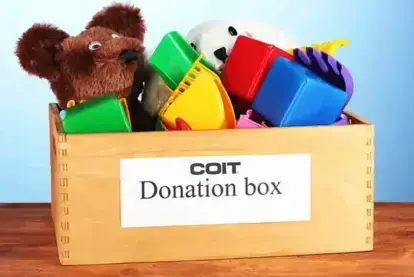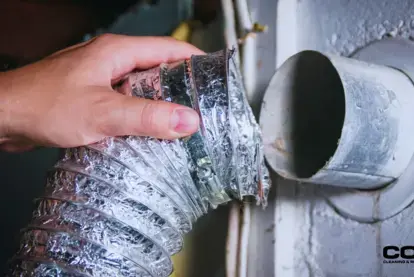
How Colorado Snow Melt Can Impact Your Home's Health
Contact COIT for a professional cleaning!
Colorado winters bring postcard-worthy scenery: snow-capped peaks, frosted trees, and soft blankets of white covering neighborhoods across the state.
But when spring arrives, many homeowners step outside to find something less picturesque — ugly gray or pink patches on their lawns.
That’s snow mold, a turf disease that thrives under long snow cover.
And while lawn snow mold might look like just a cosmetic issue, the same conditions that allow it to grow outdoors — heavy snowpack, freeze-thaw cycles, and excess moisture — can also trigger indoor mold growth in Colorado homes.
Unlike the spots on your grass, indoor mold doesn’t simply fade with the sunshine.
This guide covers both sides of the issue: how to spot, treat, and prevent snow mold on your lawn, and how to protect your home’s interior from the moisture that fuels it.
What Is Snow Mold?
Snow mold is a fungal disease that develops under snow cover, particularly in areas where snow sits on unfrozen ground. There are two main types:
- Gray snow mold (Typhula blight): Appears as circular patches of gray or white, matted grass. Often more widespread but less severe.
- Pink snow mold (Microdochium patch): Leaves behind tan to pink patches that can cause deeper turf damage and spread more aggressively.
Both types show up when the snow melts in early spring, usually between March and May in Colorado. The grass beneath looks dead, slimy, or matted, leaving many homeowners convinced their lawn is beyond saving.
The good news is that most cases of snow mold are temporary, and lawns often recover with the right care. But if ignored, the same wet, compacted conditions can set the stage for indoor mold problems, too.
Why Colorado Lawns Are Prone to Snow Mold
Snow mold isn’t unique to Colorado, but our climate makes it especially common here.
- Long snowpack: Heavy snowfalls can linger for weeks or months, keeping lawns covered.
- Freeze-thaw cycles: Snow melts during warm spells, then refreezes, trapping moisture in the soil.
- Cool-season grasses: Common varieties like Kentucky bluegrass, ryegrass, and fescue are more vulnerable.
- Compacted soil: Lawns that don’t drain well stay wetter longer, encouraging fungal growth.
In the Front Range and mountain communities, where snow can pile up early and stick around until late spring, snow mold is practically a seasonal tradition.
What month does the snow melt in Colorado?
Typically, the bulk of snow melt in Colorado happens between April and June, depending on exact elevation and local weather conditions.
How to Treat and Prevent Snow Mold Outdoors
If you see snow mold in your Colorado yard this spring, don’t panic, and don’t reach for the lawnmower just yet. Here are the best ways to treat and prevent it.
Step 1: Rake and Fluff the Grass
Lightly rake matted patches to improve air circulation and help the grass dry. This alone often revives the turf in a few weeks.
Step 2: Overseed if Needed
If areas don’t recover, overseed with a resilient cool-season grass blend to fill in bare spots.
Step 3: Aerate and Dethatch
Core aeration in the fall reduces soil compaction and improves drainage. Dethatching helps prevent fungal growth under dense layers of organic material.
Step 4: Fertilize at the Right Time
Skip heavy nitrogen fertilization in late fall, which can encourage snow mold. Instead, fertilize in early fall and spring for stronger root systems.
Step 5: Mow Before the First Snow
Keep grass around 2.5–3 inches before the first major snowfall. Taller grass gets matted, while cutting too short stresses the turf.
Step 6: Manage Snow Piles
Avoid piling shoveled snow in the same spot all winter, especially in shady areas. Spread it out so patches melt more evenly.
Indoor Risks of Colorado Snow Melt
Here’s where COIT’s expertise comes in. While lawn snow mold typically fades on its own, indoor mold won’t. The same spring thaw that reveals patches on your lawn also floods basements, dampens carpets, and seeps into air ducts.
Moisture intrusion can cause:
- Carpet and upholstery damage — trapped moisture creates a breeding ground for mold spores.
- Tile and grout staining — porous grout lines can harbor mold colonies.
- Air duct contamination — damp ducts spread spores throughout your home.
- Structural damage — drywall, wood framing, and insulation can deteriorate if mold spreads.
The big difference? Snow mold in your yard is mostly cosmetic. Indoor mold is a serious health hazard.
Don’t wait until musty odors or stains appear. Call COIT today and keep Colorado’s snow mold where it belongs — outside.
Protecting Your Home from Indoor Mold Growth
Remember: being forewarned is being forearmed. By taking preventive measures, you can help reduce the risk of mold growth in your home from snow melt.
Home Insulation
Think of insulation as your home's shield against external elements. Proper insulation acts as a barrier, preventing melting snow from seeping into walls and ceilings.
Check vulnerable areas like your basement and attic and consider upgrading or replacing any worn-out insulation.
Sump Pumps and Proper Drainage
Installing a sump pump can be a game-changer for homes prone to basement flooding.
It helps remove excess water and directs it away from your home’s foundation. Paired with a good drainage system, it can significantly mitigate flooding risks.
Moisture Control and Ventilation
Invest in a dehumidifier to regulate humidity levels in moisture-prone areas in your home. You should also ensure your home is well-ventilated—spaces that breathe are less likely to harbor mold.
Schedule Professional Cleaning
- Carpet Cleaning: Removes moisture and prevents mold from taking hold.
- Air Duct Cleaning: Stops spores from circulating through your HVAC system.
- Tile, Grout, and Stone Cleaning: Eliminates buildup that can host mold colonies.
Steps and Solutions For Mold Remediation in Colorado
If you think your home might have a mold problem, you need to act quickly. Here's what you can do if you suspect mold has already invaded your space:
Recognizing Early Signs of Mold
Be on the lookout for musty odors, discoloration on walls or ceilings, and any signs of water damage. These often indicate the presence of mold.
Professional vs. DIY Mold Remediation
While minor mold issues can be handled with DIY measures, bigger infestations should be left to the professionals. Companies that deal with mold remediation have the proper tools and expertise to tackle the problem at its root.
Addressing the Root Cause
Mold is a symptom of a bigger issue: moisture. It's important to quickly identify and fix the root cause, whether it’s a leak, poor insulation, or inadequate ventilation.
Economic Implications
Ignoring the signs of mold growth and structural damage from snow melt can be an expensive oversight.
Preventive measures might require an upfront investment but can save you a substantial amount of headaches and money in the long run. It's a clear case of "better safe than sorry."
With proactive measures, regular checks, and a little investment, you can protect your home from the dangers of melting snow in Colorado.
Remember—it's not just about the structure of your home, but the health of its inhabitants, too.
Discover our commercial and residential mold remediation services in Denver.
FAQs About Snow Mold in Colorado
Is snow mold harmful to humans?
Snow mold on lawns is not considered dangerous. Indoor mold caused by snowmelt, however, can be harmful, especially for people with asthma, allergies, or weakened immune systems.
What are the symptoms of snow mold?
Outdoors: circular gray or pink patches, matted grass, slimy or dead turf. Indoors: musty odors, discolored walls, carpet stains, or visible mold spots.
How long does snow mold last?
Outdoor snow mold usually disappears within 2–6 weeks as temperatures rise and grass begins to grow. Indoor mold persists until properly remediated.
Does snow mold go away?
On lawns, yes, most mild cases fade naturally. Indoors, no. Professional treatment is required to eliminate it completely.



